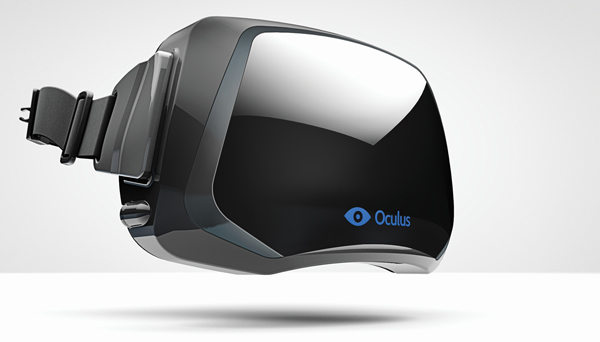September 20, 2014
Virtual reality will make the Internet seem old fashioned

The Internet is getting old. Here we are clicking on computer screens, tapping on pieces of glass — reading, looking at pictures, watching videos. This is supposed to be high tech? It’s just a new way of doing old stuff.
Luckily, some truly new stuff is coming our way. Soon, games, entertainment and the news will be a whole new experience.
I’m talking about Oculus Rift, a virtual reality system that was recently bought by Facebook and is being developed in partnership with Samsung. Facebook released a new prototype on Saturday with major audio advances. And Samsung has released Gear VR, a system powered by smartphones.
Oculus started out as an immersive way to play video games, but it turns out that may be just the tip of the iceberg.
How about strapping on the head gear and taking in a concert? You wouldn’t be stuck in a chair like an ordinary member of the audience. You could fly around the venue and look at it from multiple angles, maybe go on stage and get the view of the performer.
Rolling Stone imagined such a thing in an interview with Jeremy Bailenson, founding director of Stanford University’s Virtual Human Interaction Lab:
“Now, because cameras are so cheap and can be so tiny, you can flood a concert hall with them — imagine that every single person at the concert had these cameras on them. If they were networked, it could all be stitched into one unified 3D model of the concert.” So you could view the show from almost any angle. Add in haptic feedback (which the Rift doesn’t have), and you could even experience the sensation of slamming into someone in the pit.
A demonstration of a concert similar to this took place in April at the Sundance Film Festival.
I press a button, and suddenly I’m in the back of the audience, slowly revolving counterclockwise around this circuit. I’m free to turn in any direction so I can inspect the artists when I move past, or watch Beck on stage.
Or how about if you didn’t want to just watch a TV show, but actually be part of it. One fan has created a VR of Jerry’s apartment from Seinfeld. You can’t interact with the characters, but I predict that won’t be far off.
NBC went on the road earlier this month with an Oculus Rift experience that allows fans to sit in the judges’ chairs in The Voice. Imagine interacting with fellow judges Gwen Stefani, Pharrell Williams, Adam Levine and Blake Shelton.
And soon it will be possible for virtual reality to take us on virtual travels. Marriott Hotels is already offering something like it:
Suddenly, I’m drawn into the map. The terrain lines warp around me, creating a tunnel. With a whoosh, I shoot through the wormhole onto a black-sand beach. The sky is blue, the palms are swaying, the ocean laps at the shoreline. For a moment, everything is completely, utterly serene. I am in Maui.
Journalists had better pay attention to virtual reality because people will soon expect more than just being told about an event — they will want to be there and have the reporter give them a guided tour.
If it can be done with travel and concerts, why not with major events such as a royal wedding or the opening ceremonies at the Olympics. Many people would be willing to pay to be virtual spectators.
The next step might be to make it possible for sports fans to take the virtual seat of their choice at the Super Bowl or the World Cup final.
Something similar could be done with documentaries. We could walk among the penguins in Antarctica, run with the rebels in Syria, watch the votes being counted in the Scottish referendum. Or experience life as a prisoner at Guantanamo Bay. Oh wait — it’s already been done by Nonny de la Peña from USC School of Cinematic Arts:
With his hands tied behind his back and muffled sound deliberately made to sound like he had a hood over his head in his ears, one participant quickly ended up in a stress position.
In our times, people line up to buy an iPhone whose most amazing trick is the ability to swipe an image and make it seem like the wind is blowing through picture of trees. In the future, we’ll feel the chill of the wind on our bodies as we trek along on a virtual expedition at the North Pole.
